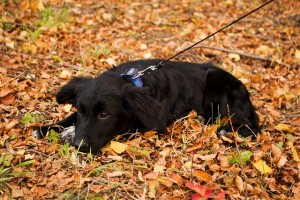As dog owners it’s up to us to know how far we should expect our dogs to walk. Puppies should have limited walks until they have stopped growing. This can take anything from 6 months to 3 years depending on the breed of dog. Generally allow one month of growing for every 2.5cm (1 inch) of expected height at the shoulder. During this time puppies can be walked for 5 minutes for every month of life. So a 6 month old can do a 30 minute walk. If you ask them to do more than this you risk damage to joints from the repeated action of stepping and jarring on road surfaces. This is something you won’t necessarily see straight away but which can become apparent as your dog gets older. If your puppy lies down during a walk they are telling you they are tired, they are not being lazy.
Get your puppy used to walking on a short lead by your side and alternate the hand you hold the lead in so your puppy is happy to walk on your left and your right. When a dog always walks on the same side of the owner they can develop uneven neck muscles as they are always turning the same way to look for instructions and if they pull on the lead they are always pulling in the same direction which can also strain the neck, shoulder and leg on one side of your dog. Try to vary your walk so your dog learns to turn left and right. It’s surprising how many people do a circular walk round the block and the dog always turns left so when it has to turn right it finds it more difficult!
Walks should be of a consistent speed, intensity and length and built up over time. The Weekend Warrior Syndrome refers to walking for 20 minutes each weekday and then going for a 2 hour walk at the weekend and feeling really sore afterwards – you and the dog! Long walks need to be worked up to especially on rough or hilly terrain that paw pads, joints and muscles aren’t used to.
The first and last 5 minutes of a walk should be taken at a slow walk/trotting pace to warm up and cool down. Running from a standing start straight out of the car can lead to pulled muscles and twisted joints. Games of fetch and catch should be avoided until your puppy is fully grown unless you teach your dog to stay while the ball is thrown and then to go and get it. The sudden landing, braking and turning dogs do chasing a speeding ball can cause immense damage to joints and muscles.
Alternative ways of getting rid of puppy energy include basic training, gentle playing and time to explore within safe environments which stimulates the mind of your dog which is just as tiring.


No comments yet.